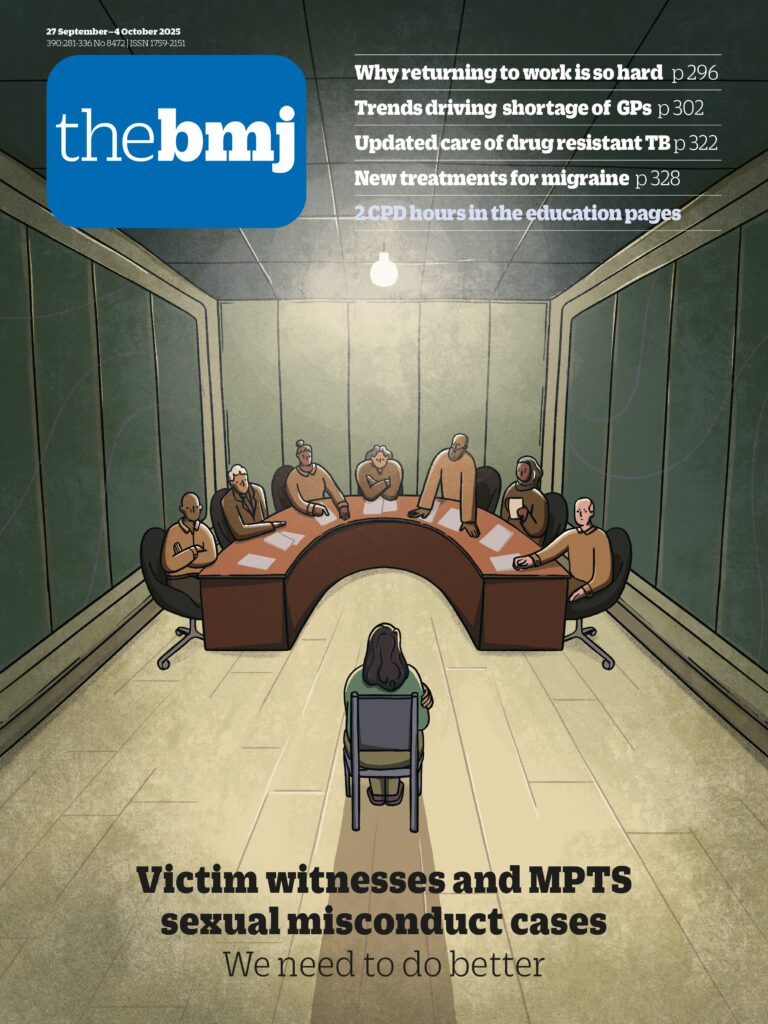- Jonna Kuntsi, professor of developmental disorders and neuropsychiatry
Recognising that ADHD exists on a continuum could help reduce misunderstanding and improve interventions, writes Jonna Kuntsi
The debate around attention deficit/hyperactivity disorder (ADHD), in the media and the clinical-scientific world, has recently reached new heights. This is partly due to many countries seeing a high increase in the number of people seeking ADHD assessment and diagnosis.1 One aspect of the discourse that is leading to confusion and misunderstanding is the lack of awareness that ADHD exists on a continuum. While the existence of autism on a spectrum is now widely accepted, understanding of the ADHD continuum lags behind.
There is strong evidence, including genetic evidence, that ADHD is the extreme of quantitative traits.2 The dimensionality of ADHD is already reflected in the diagnostic process: how ADHD is measured and diagnosed relies on quantitative measures of symptoms and how impairing they are. Diagnosis represents a cut-off on a dimension: the number of symptoms required to reach an ADHD diagnosis has varied in different versions of the diagnostic classification systems over time. For example, the latest version of the Diagnostic and Statistical Manual of Mental Disorders (DSM-5)3 lowered the number of symptoms required to meet diagnosis in adults, from six to five symptoms, in either the inattention or the hyperactivity-impulsivity domain. Changes over time show how the diagnostic cut-off is not set in stone and can be adjusted along the ADHD continuum, when new evidence emerges among specific age groups about the extent of symptoms and impairment that are considered severe enough to require treatment.
Clear acknowledgment and open discussion about the ADHD continuum should help us better understand the condition, target interventions, and consider the broader social context. Some people being assessed for ADHD will have symptoms that severely impair their daily lives. But others will unavoidably be close to the diagnostic cut-off, given the dimensional nature of how we measure ADHD. This also means that different people with an ADHD diagnosis can vary in the severity of their symptoms and how impairing they are.
In addition, the same person can also show substantial fluctuations in symptom severity over time.4 While ADHD is linked partly to genetic and biological underpinnings,2 how symptoms are expressed and how impairing they are can vary depending on the social and environmental context.5 We need more research on how best to target interventions to different severities of ADHD symptoms.
Context dependence
When people with ADHD are compared with people without the condition, differences are observed at all levels of investigation, from genetics and neurotransmitters to brain structure and cognitive performance.67 However, such correlates also vary on a continuum. We can consider cognitive performance as an example: if we ask a large group of people with and without ADHD to perform a cognitive task measuring attention, we will observe a range of scores in both groups. Although the mean score among people with ADHD will be towards one end of the scale, there will be some overlap in the scores in the two groups.
The extent to which a person’s ADHD symptoms—inattention, hyperactivity, and impulsivity—are an impairment in everyday life is dependent on the societal context. A child’s restlessness and challenges in concentrating are not likely to cause major problems when playing in a playground, but they can emerge as a cause for concern at the start of school because of the expectations of focused academic work in the classroom. Acknowledging the role of social context can help to indicate when the need for intervention and support is greatest: when there’s a mismatch between the environmental demands and the characteristics of the person with ADHD.
Recognising people who fall just above or below the diagnostic cut-off helps us interpret multinational research evidence for the “relative age” effect for ADHD. Children who are the youngest in their class are more likely to be rated as high for ADHD symptoms and to receive an ADHD diagnosis than older children in the same class.8910 Here, we need to keep in mind that ADHD in children is rated and diagnosed relative to others of the same age and that the symptoms must be inappropriate for their developmental level. Children who are younger in their class with “borderline” levels of ADHD symptoms may be more likely, if they are inappropriately compared with their older peers, to be referred for a diagnostic assessment and therefore also to receive a diagnosis.
Increased awareness and acknowledgment that we all fall somewhere along the ADHD continuum—as we do along the spectrum of autism or levels of anxiety—could help reduce stigma and misunderstandings that are still pervasive in many media and clinical-scientific debates. The language we use matters: how health professionals, researchers, teachers, and the media describe ADHD and interpret or communicate research findings is a powerful tool. Greater awareness of the ADHD continuum—of the varying severity and how impairment is linked to the societal context—can also inform better targeted interventions.
Acknowledgments
I thank Aislinn Bowler, Katie Cunningham-Rowe, and Anna Redly for their helpful feedback on an earlier draft.
Footnotes
-
Funding: JK is funded by a Medical Research Council programme grant (MR/Y003209/1), a European Union Horizon 2020 research and innovation programme grant (no 965381), and a Medical Research Council project grant (MR/X02220X/1).
-
Competing interests: JK has delivered talks at educational events sponsored by Medice, with all funds directed to King’s College London to support ADHD research.
-
Provenance: Not commissioned; not externally peer reviewed.

